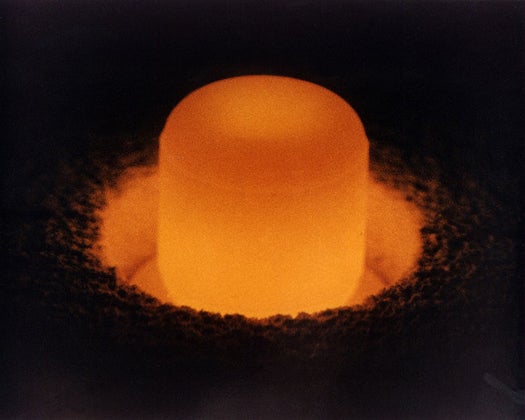NASA Can Make 3 More Nuclear Batteries, And That’s It
Plutonium-238 is still in really short supply


MMRTG
Few materials in the universe are in as short supply as plutonium-238–the hot, radioactive material NASA uses to power its pluckiest spacecraft. It’s estimated only 77 pounds (35 kilograms) of the stuff remains available to NASA, yet only 37 pounds (17 kilograms) of that supply is of a high-enough quality to use. And that’s a huge problem for deep-space missions of the future.
Plutonium-238 is an artifact of the Cold War, a byproduct of the process used to make nuclear weapons. Since nuclear non-proliferation became popular, the flow of plutonium-238 has ceased and left limited stockpiles of this incredibly useful and relatively long-lived fuel. Plutonium-238 continues to power deep-space missions such as Voyager, Curiosity, and New Horizons, but according to a new report by Space News, there’s only enough left to make three more nuclear batteries.
The batteries in question are called the Multi-Mission Radioisotope Thermoelectric Generators, or MMRTGs, which the Department of Energy makes for NASA. When a spacecraft launches with an MMRTG, it puts out about 125 watts of power at the start but fades to about 100 watts after 14 years. (As the Pu-238 decays, it releases less and less heat to for the battery to convert into electricity.)

There’s another nuclear battery design, however, that could stretch NASA’s shrinking stockpile: the Advance Stirling Radioisotope Generator (ASRG). This model uses less than one-fourth the plutonium-238 to produce the same amount of power as an MMRTG. Among its potential missions? Powering a nuclear submarine on Saturn’s moon Titan. Unfortunately, it doesn’t look like that’s going to happen anytime soon. Last year, NASA closed down the ASRG team, ending that particular avenue of escape–for now.
NASA intends to use the first of the three MMRTGs to power the Mars 2020 mission, which will use a spacecraft almost identical to the Mars Curiosity Rover. The other two nuclear batteries have unknown fates. The Department of Energy just restarted domestic production of plutonium-238, but making it in large enough quantities to help the space program is an ongoing challenge.